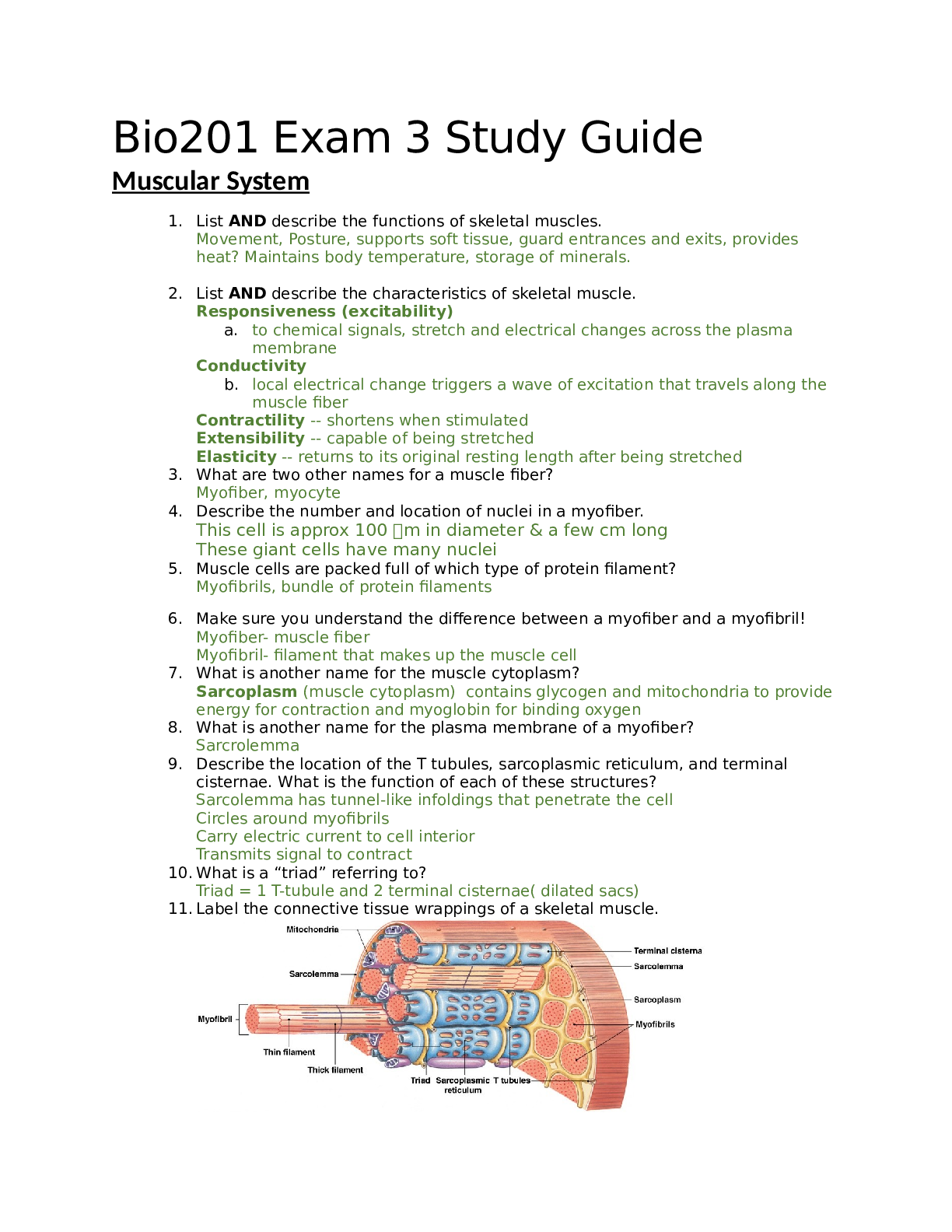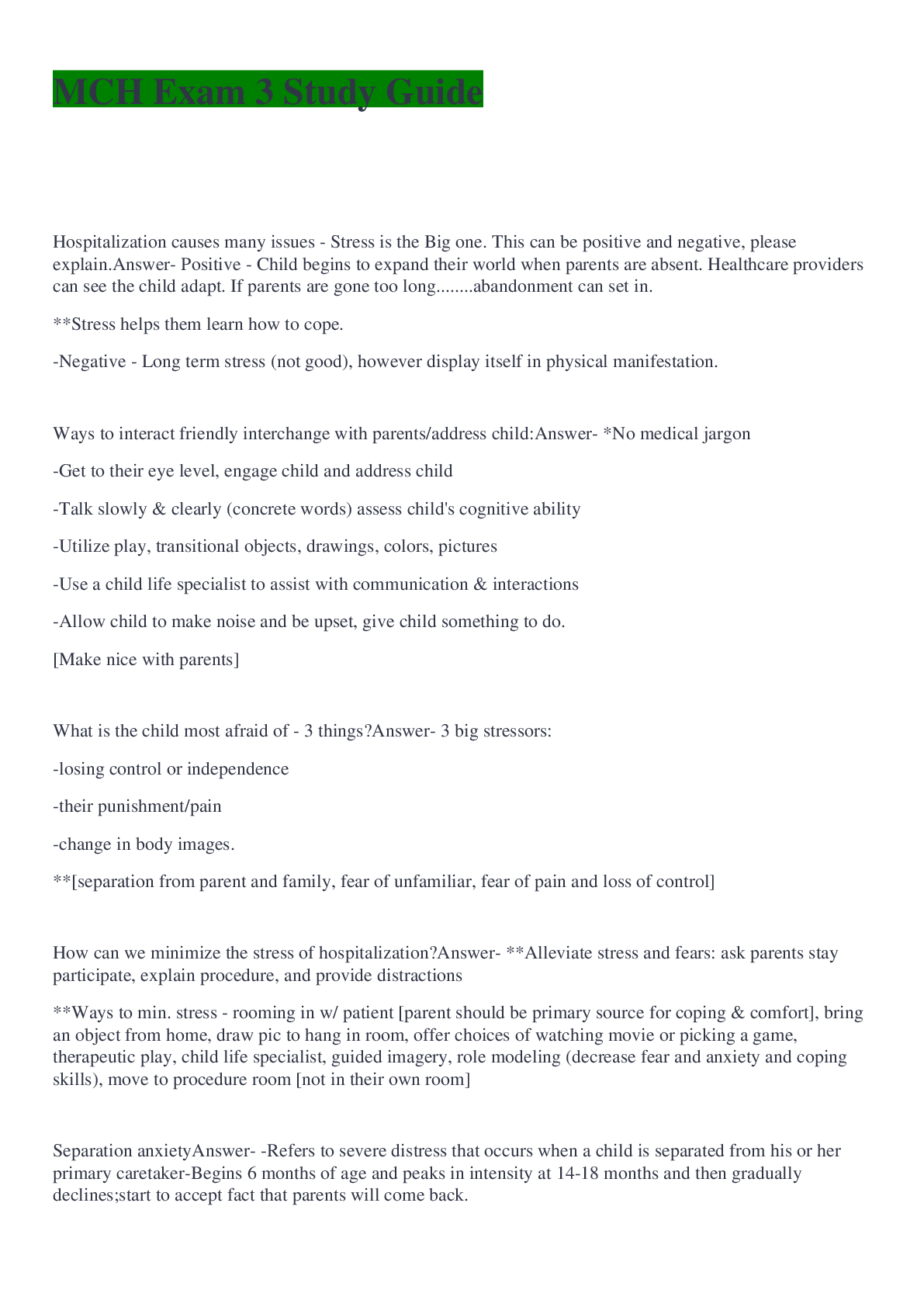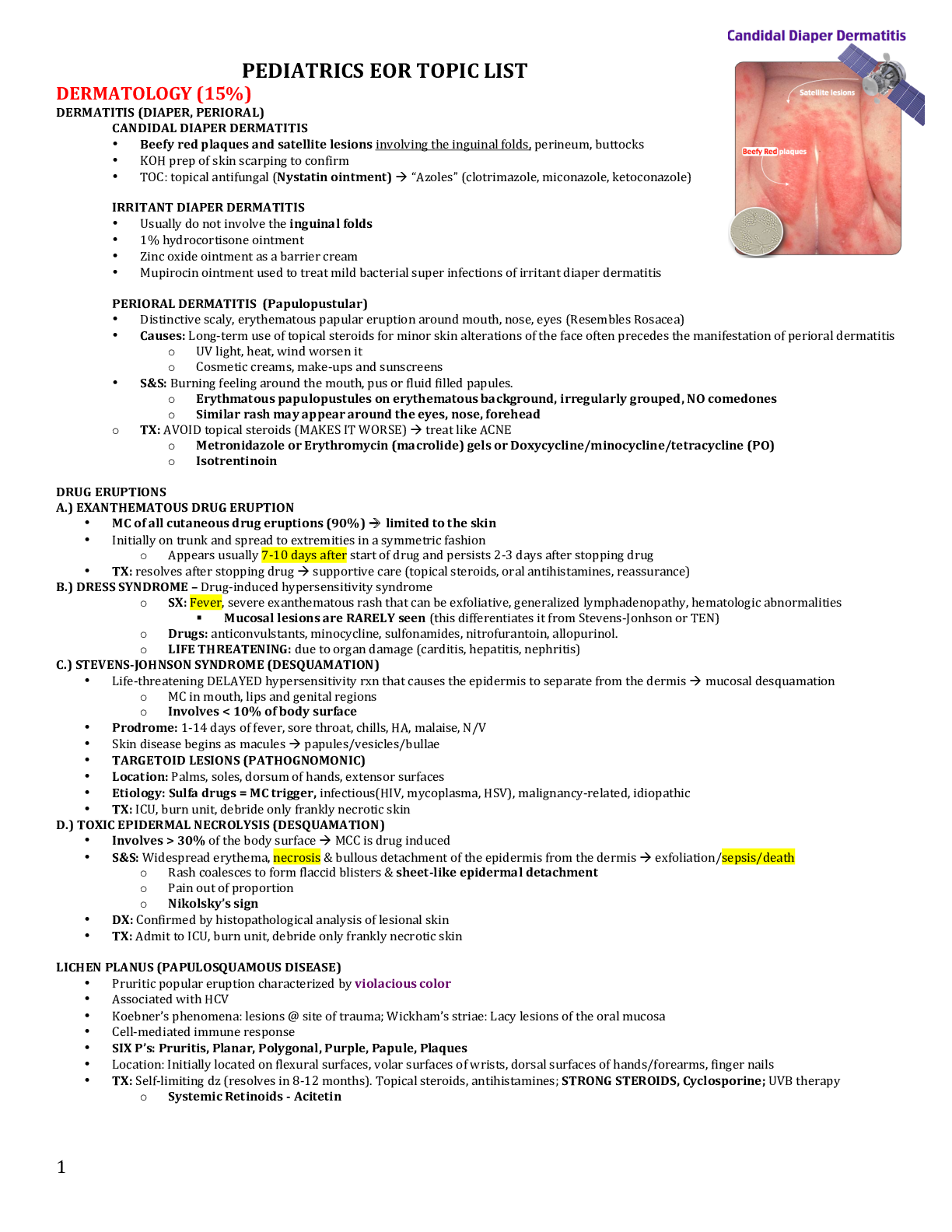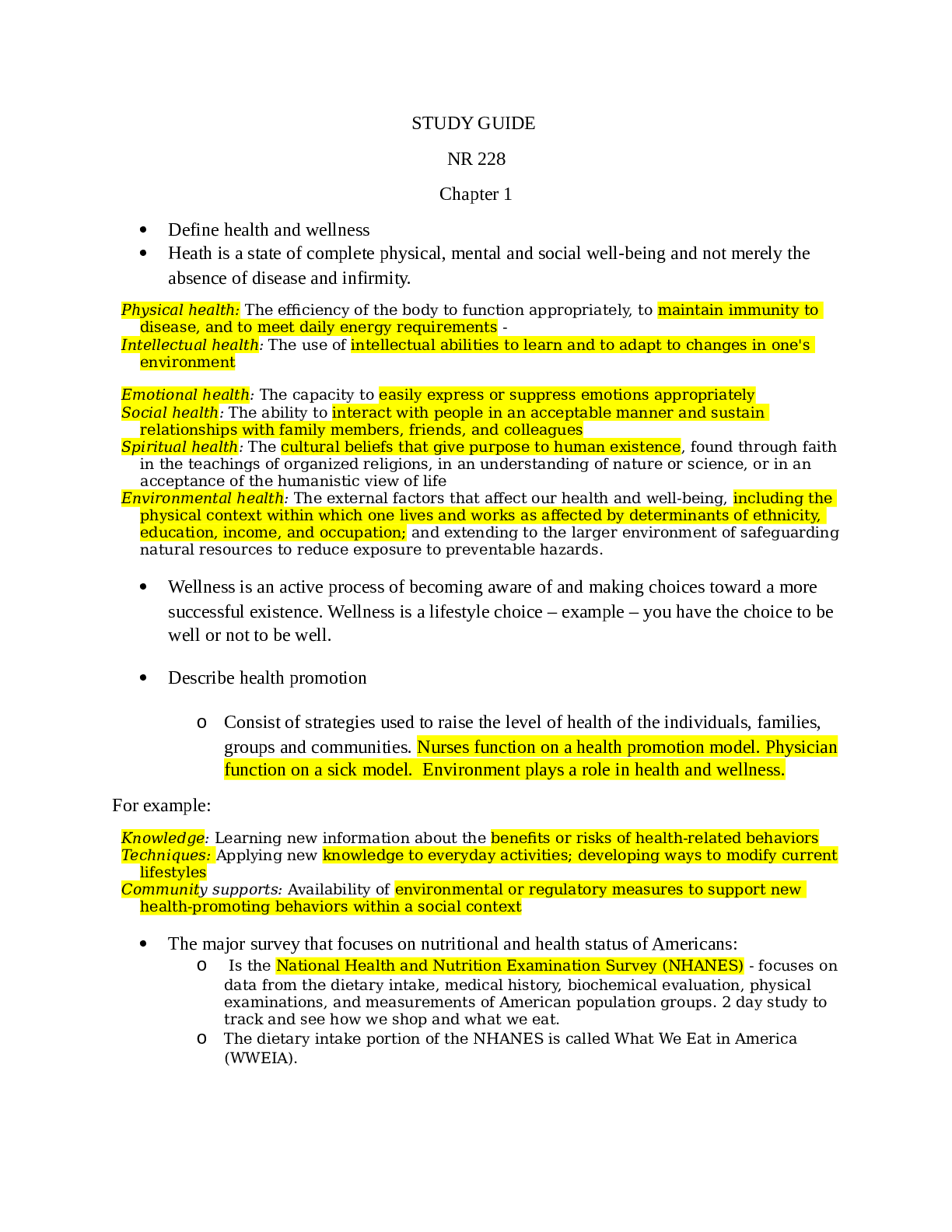*NURSING > STUDY GUIDE > NUR155 EXAM 3 STUDY GUIDE – Galen College (All)
NUR155 EXAM 3 STUDY GUIDE – Galen College
Document Content and Description Below
NUR155 EXAM 3 STUDY GUIDE – Galen College NUR 155 EXAM 3 STUDY GUIDE The majority of the content for the exam is addressed in the weekly class notes. There are instances where you may find that... you HAVE to go to the Textbook to supplement your class notes. Please DO NOT email me to say you cannot find resource material for the topics outlined below—you have class notes, textbooks, and lab experience. You have what you need 1. Circulation a. Recognize 3 important differences between arteries and veins b. Be able to give examples of how venous blood gets back to the heart c. Discuss signs/symptoms of DVT, risk factors for DVT, and nursing interventions for DVT d. Be able to trace the path of a red blood cell through the heart e. Describe capillaries and what they do f. What is cardiac output? i. Normal cardiac output for an adult? ii. Signs/symptoms that cardiac output is diminished? g. Common elements of a complete cardiovascular assessment i. History ii. Physical exam iii. Common diagnostic tests h. Discuss Coronary Artery Disease (CAD) i. Pathophysiology ii. Risk Factors—modifiable and non-modifiable iii. Signs and symptoms iv. Angina vs Myocardial Infarction v. Nursing Interventions for CAD i. Discuss Heart Failure (HF)— i. Pathophysiology ii. Signs and symptoms (in general, i.e. shortness of breath, edema, activity intolerance) iii. Nursing Interventions for HF j. Recognize common medications for heart conditions i. Diuretics ii. Beta blockers iii. Nitrates iv. Antihypertensives k. List important topics for patient education regarding heart health 2. Pain Management a. What is “pain” as defined by Margo McCaffrey? b. Describe acute vs chronic pain c. What factors influence Pain Perception? d. What information does a nurse need to collect when doing an initial pain history/assessment? e. The BEST indicator that pain is present, getting worse or getting better is the patient’s self report! What are some other indicators, or signs/symptoms, of pain the nurse can observe for? f. Recognize important Practice Guidelines for Pain Management (slide 17) g. Recognize common barriers to effective pain management h. Describe how opioid (narcotic) pain medications work i. Why are opioid pain medications “controlled substances”? j. Recognize the most serious potential side effects (respiratory depression, decreased BP) and how to prevent/treat them k. Recognize the most common side effects (nausea/vomiting, constipation, urinary retention) and how to prevent/treat them l. Chronic pain and/or nerve pain management often employees the use of “coanalgesic” or adjuvant drugs. These drugs aren’t analgesics, so why do we use them? m. Postoperative patients often are provided opioid pain medication via PCA. What is it? What is “PCA by Proxy” and why should the nurse strongly discourage it? n. What are some non-pharmacological pain management techniques the nurse can implement or recommend? 3. Fluid, Electrolyte, Acid-Base Balance a. Describe the 3 fluid compartments of the human body, including which is largest. b. The tonicity of intracellular and extracellular fluids is 0.9%, also called _____tonic. c. Diffusion, osmosis and active transport are 3 ways fluids and particles move between compartments. Describe each. d. Which organ plays the largest overall role in fluid, electrolyte and acid-base balance? e. Recognize 2 hormones that play an important role in preserving (retaining) fluid in our bodies. f. Sodium and potassium are 2 of the most important electrolytes. What fluid compartment (intracellular or plasma) contains the highest concentration of each? g. How is the extreme difference in sodium and potassium concentration maintained? h. Recognize NORMAL serum (blood) levels for Sodium and Potassium. i. Recognize signs/symptoms associated with hyperkalemia and hypokalemia. j. Recognize signs/symptoms associated with hypernatremia and hyponatremia. k. Which 2 organ systems work together to maintain acid-base balance? Which one accomplishes adjustments quickly, and which one accomplishes adjustments more slowly? How to they each accomplish adjustments? l. What is normal pH for the blood? Recognize pH values that are incompatible with life and why acidosis is so dangerous. m. What is the role of “buffers” and which are most important? n. Acidosis and alkalosis have many similar signs and symptoms, but numbness and tingling in the face/hands/feet are uniquely associated with which one? o. Assess ABG’s—recognizing i. Normal ii. Respiratory acidosis (common causes?) iii. Respiratory alkalosis (common causes?) iv. Metabolic acidosis (common causes?) v. Metabolic alkalosis (common causes?) [Show More]
Last updated: 1 year ago
Preview 1 out of 10 pages
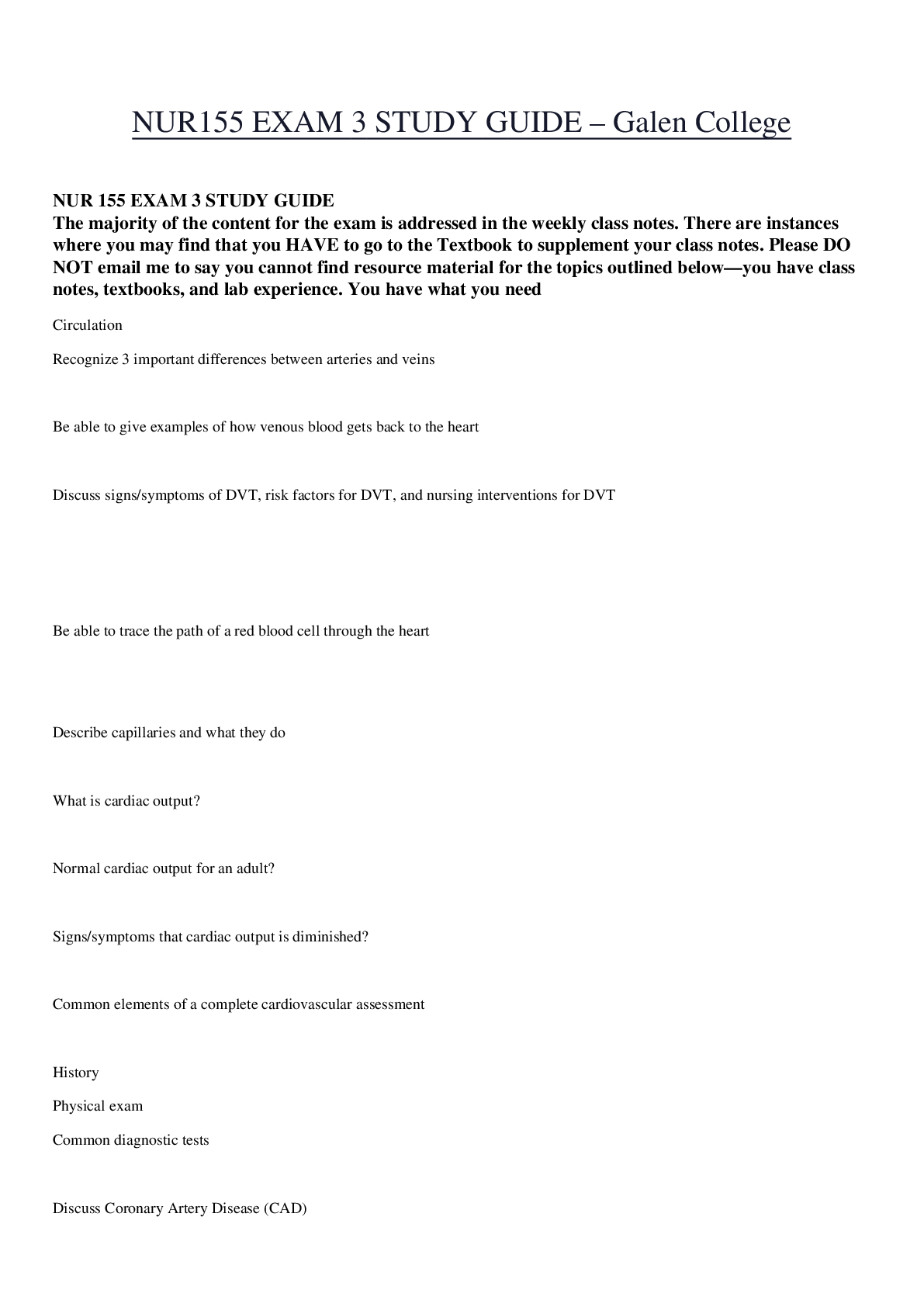
Reviews( 0 )
Document information
Connected school, study & course
About the document
Uploaded On
May 24, 2020
Number of pages
10
Written in
Additional information
This document has been written for:
Uploaded
May 24, 2020
Downloads
1
Views
283

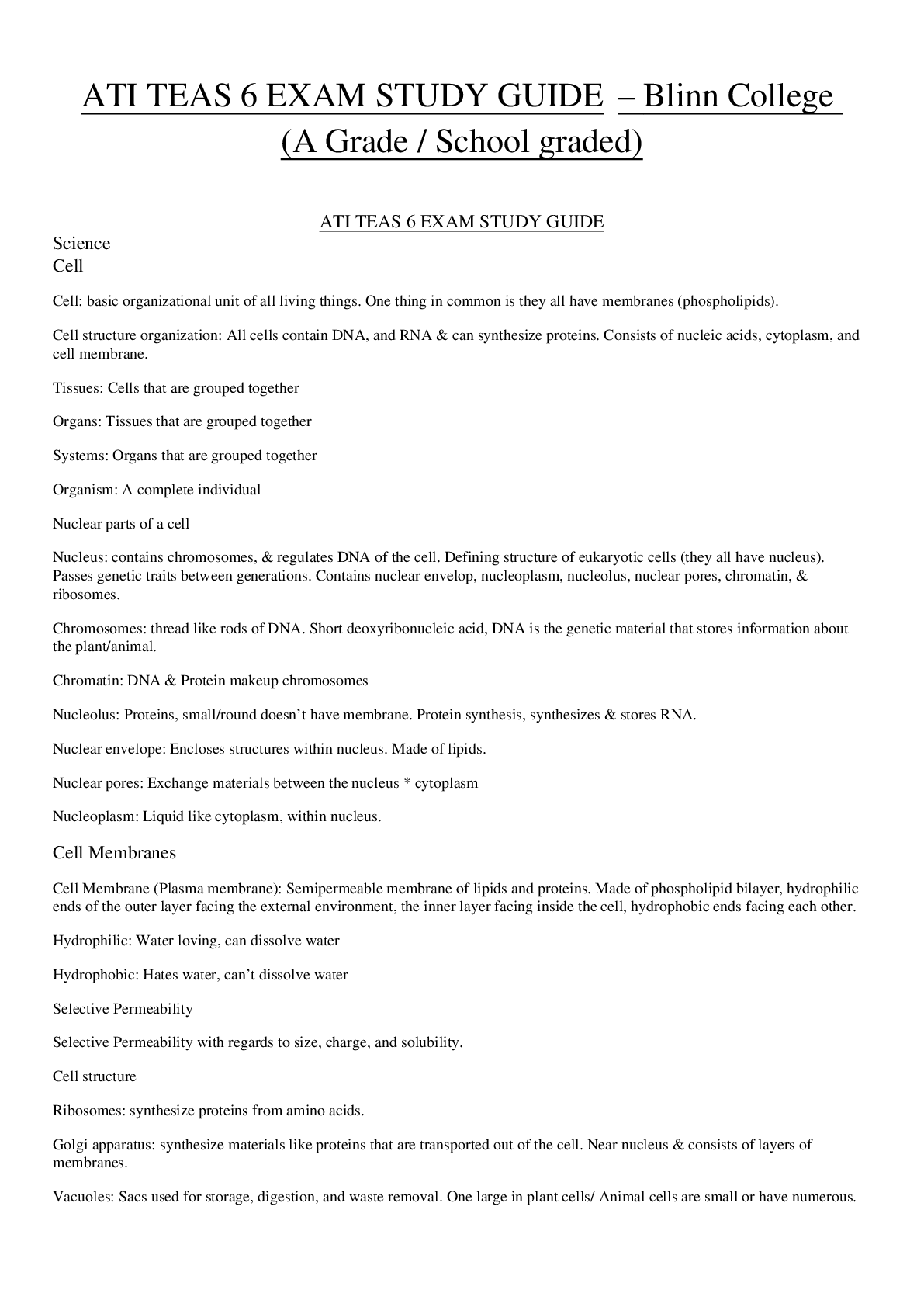
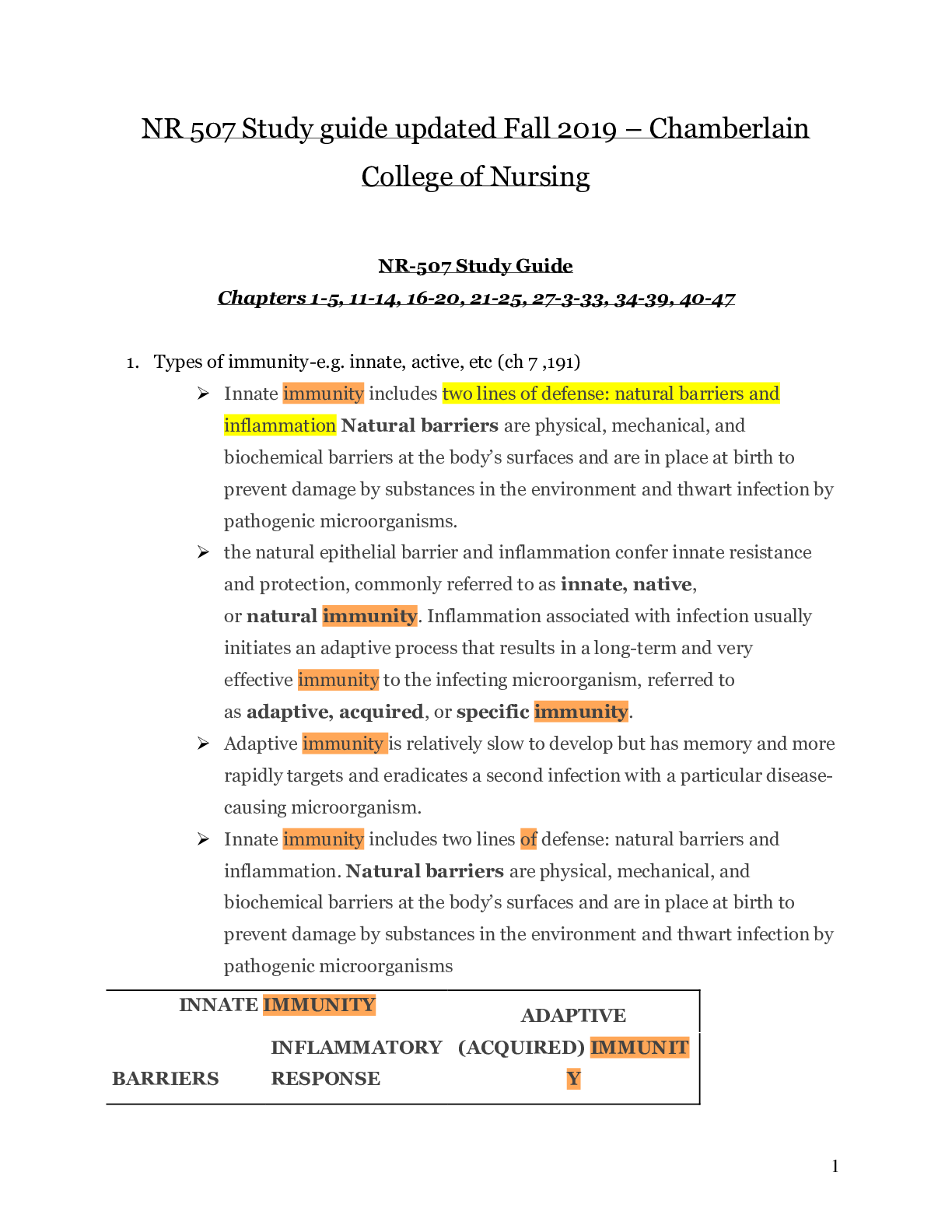
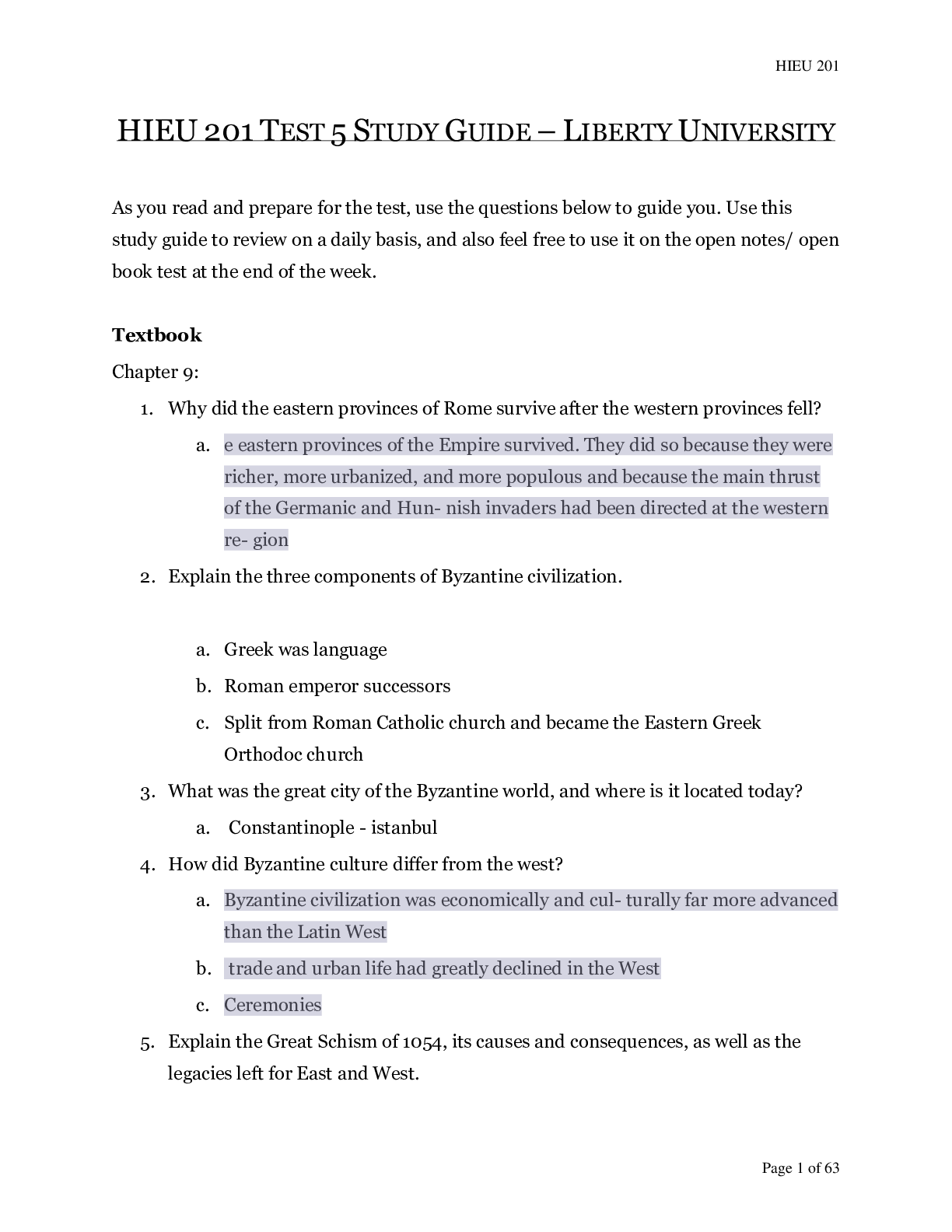
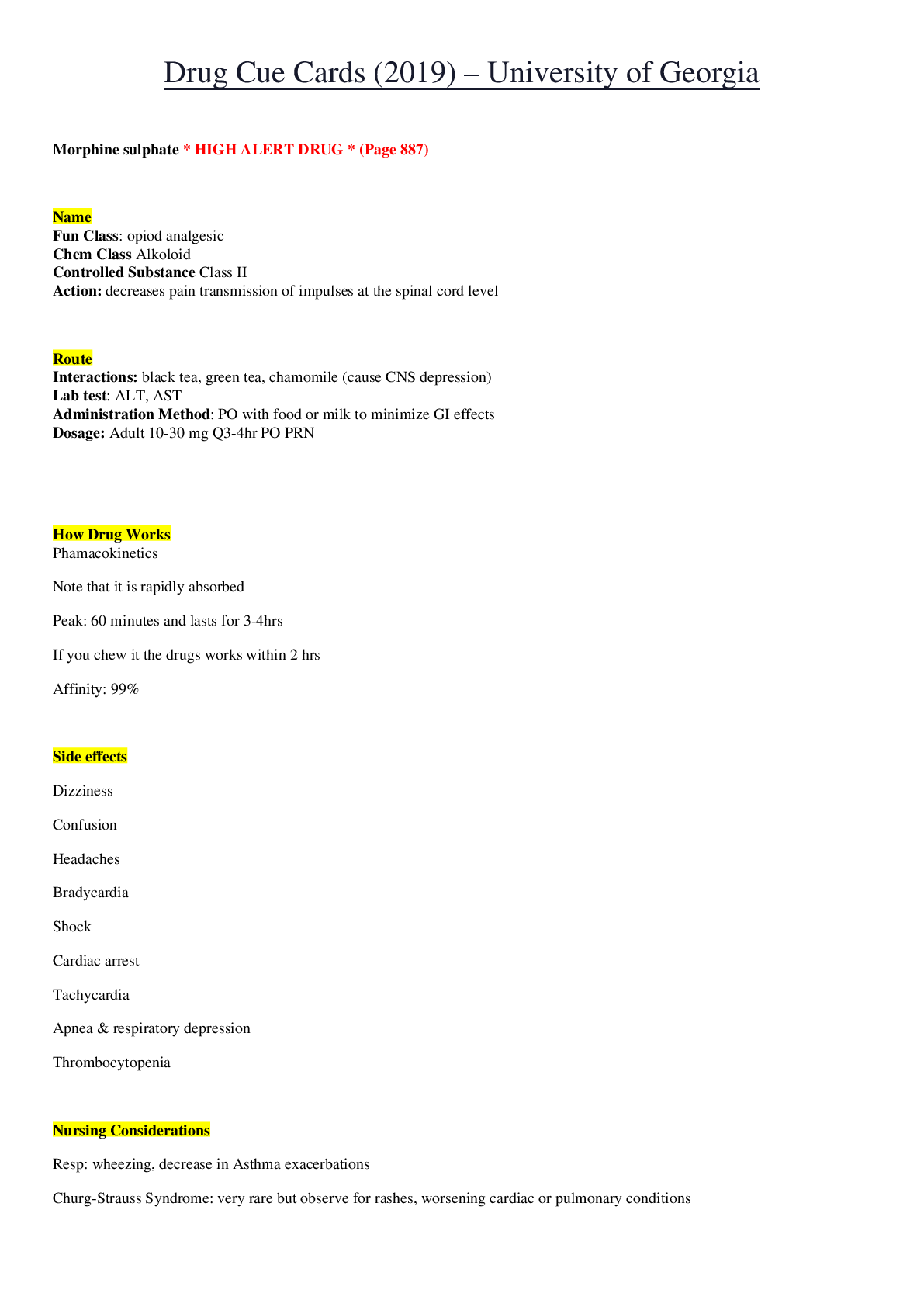
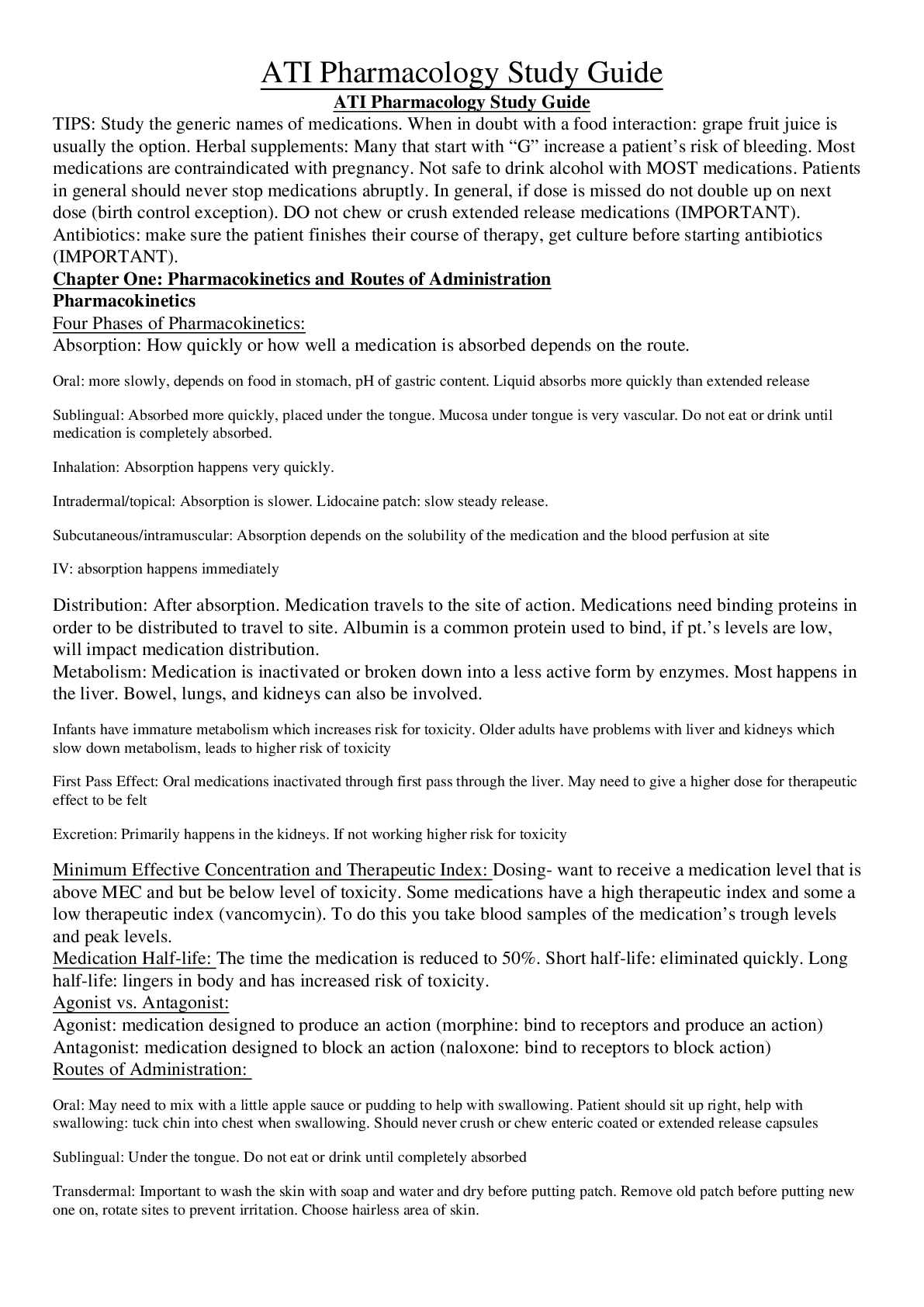
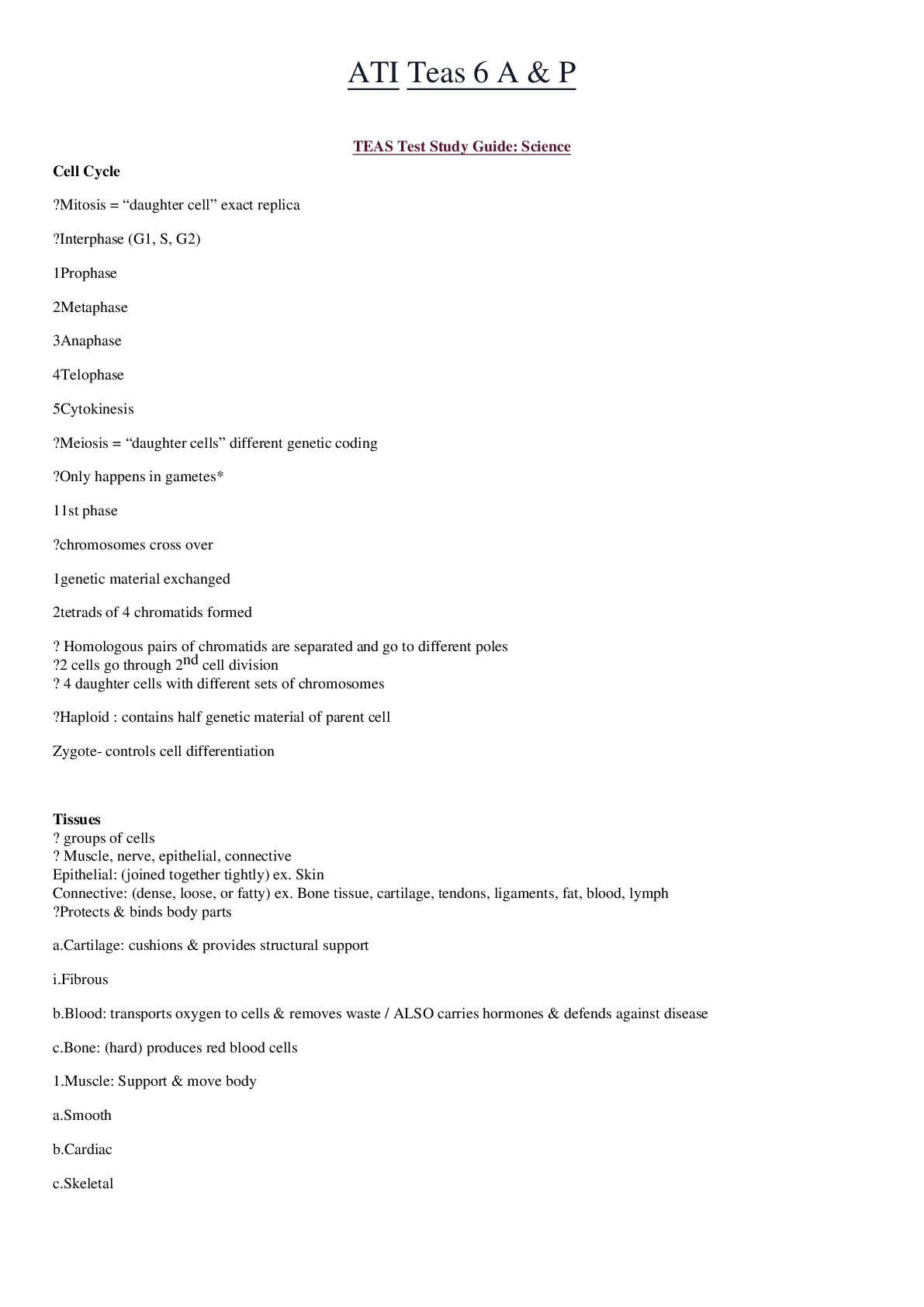
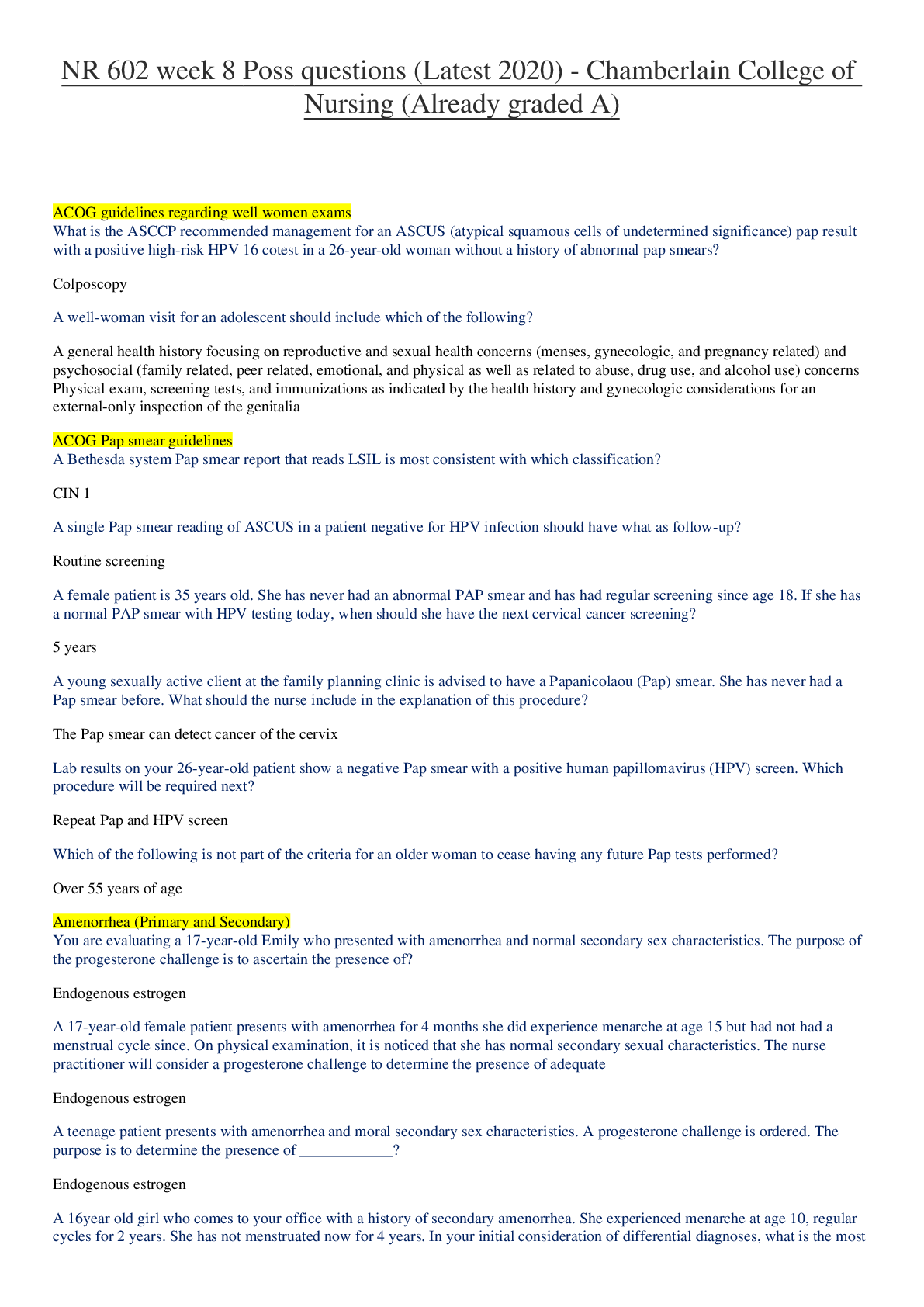
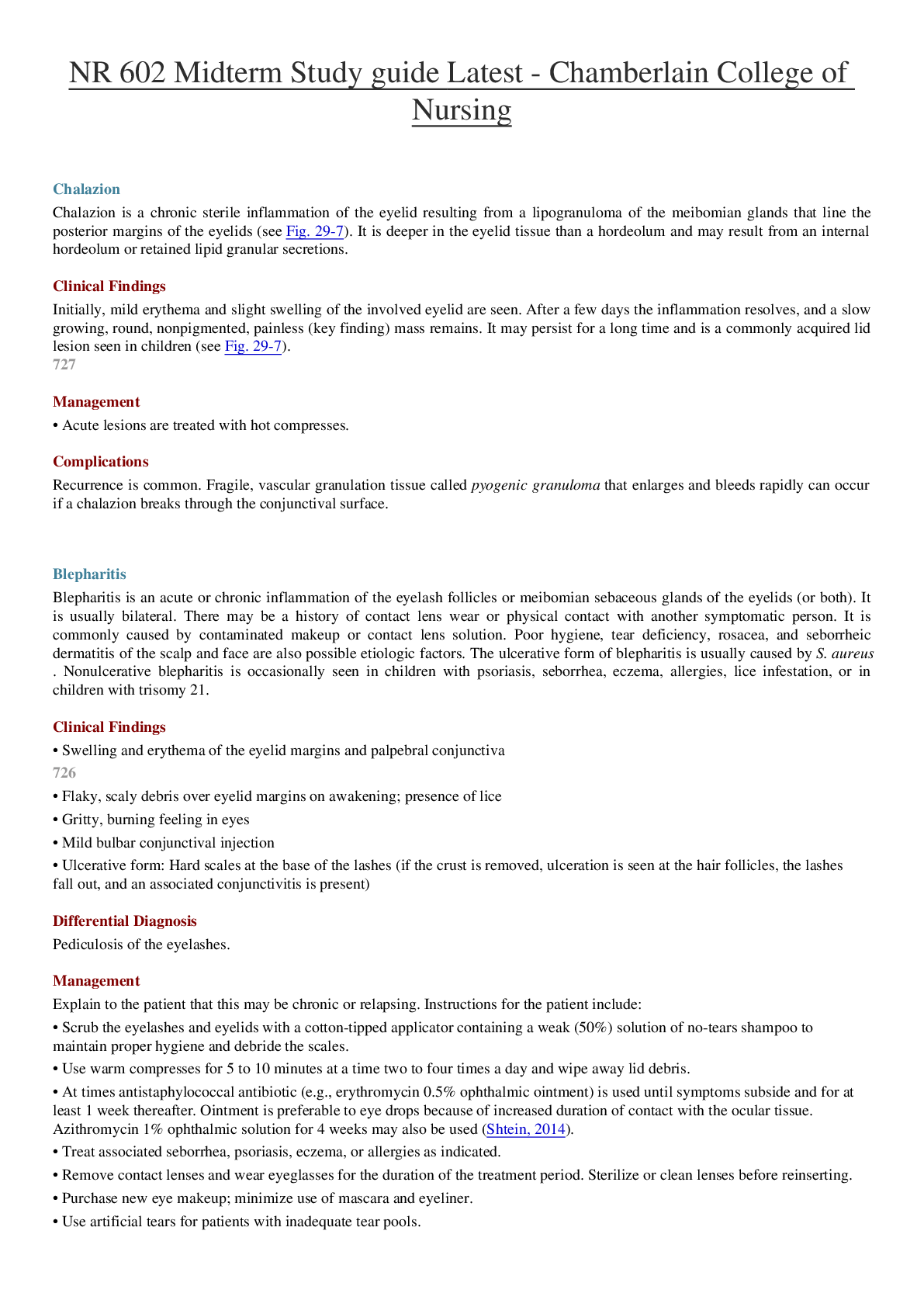
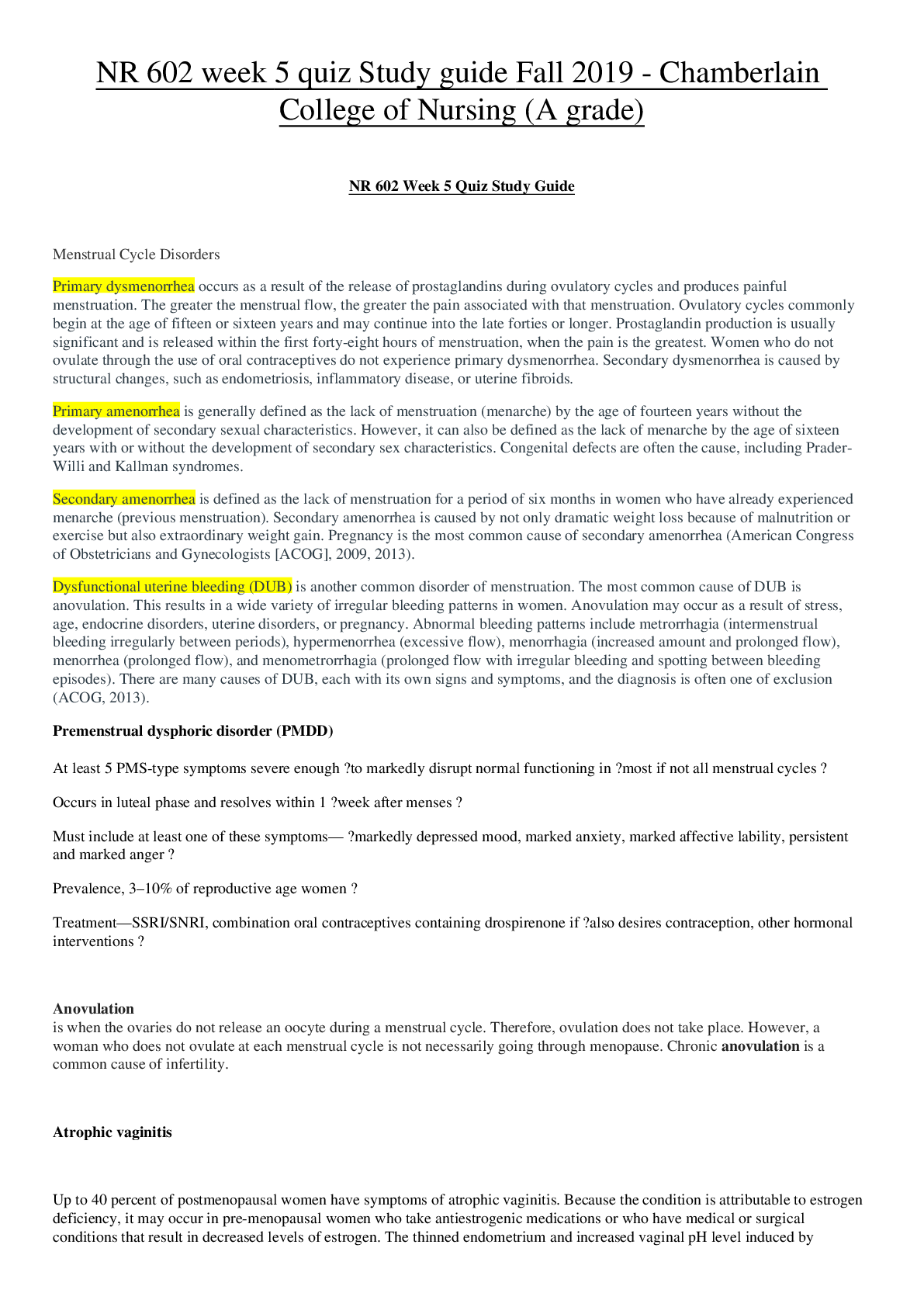
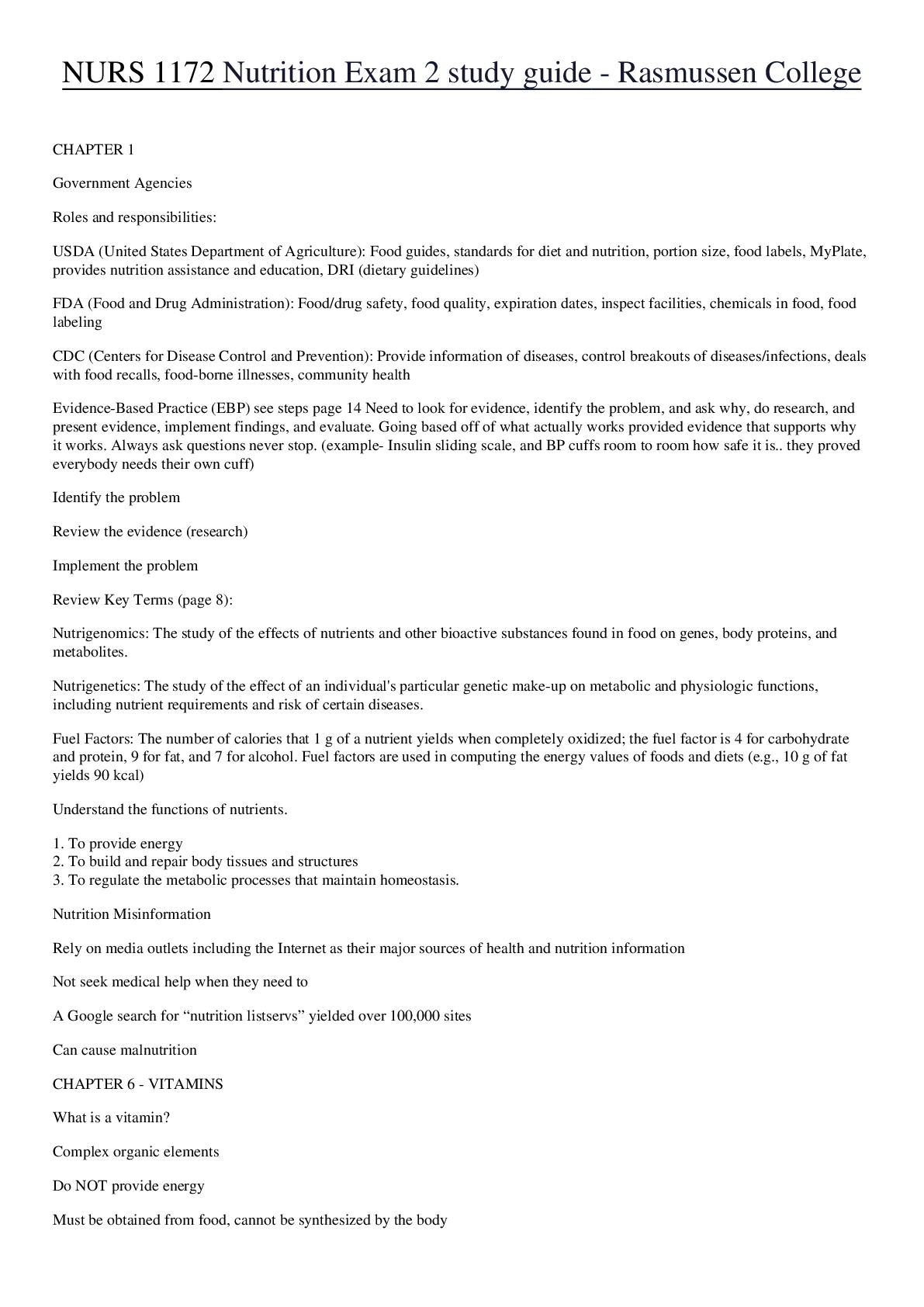
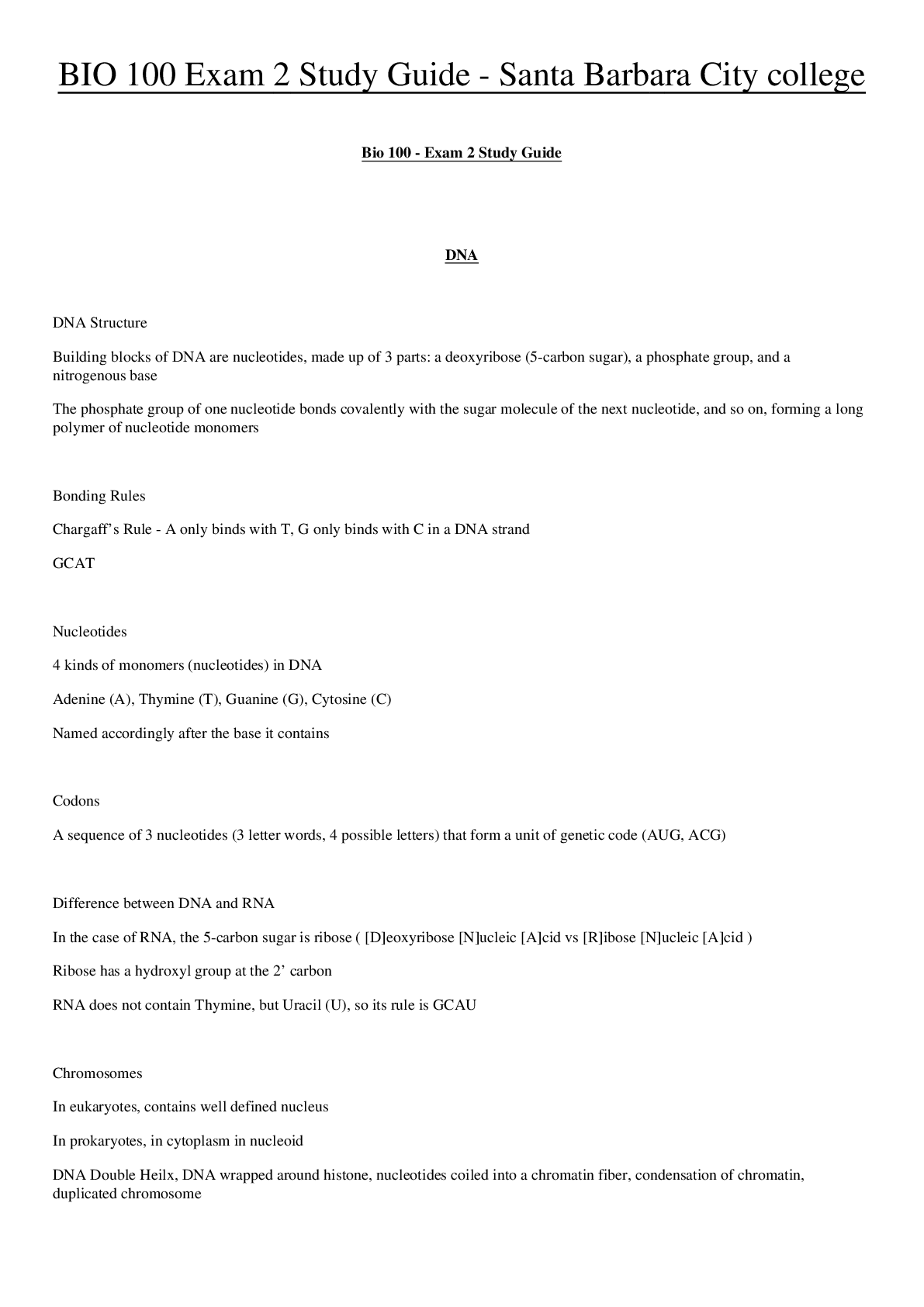
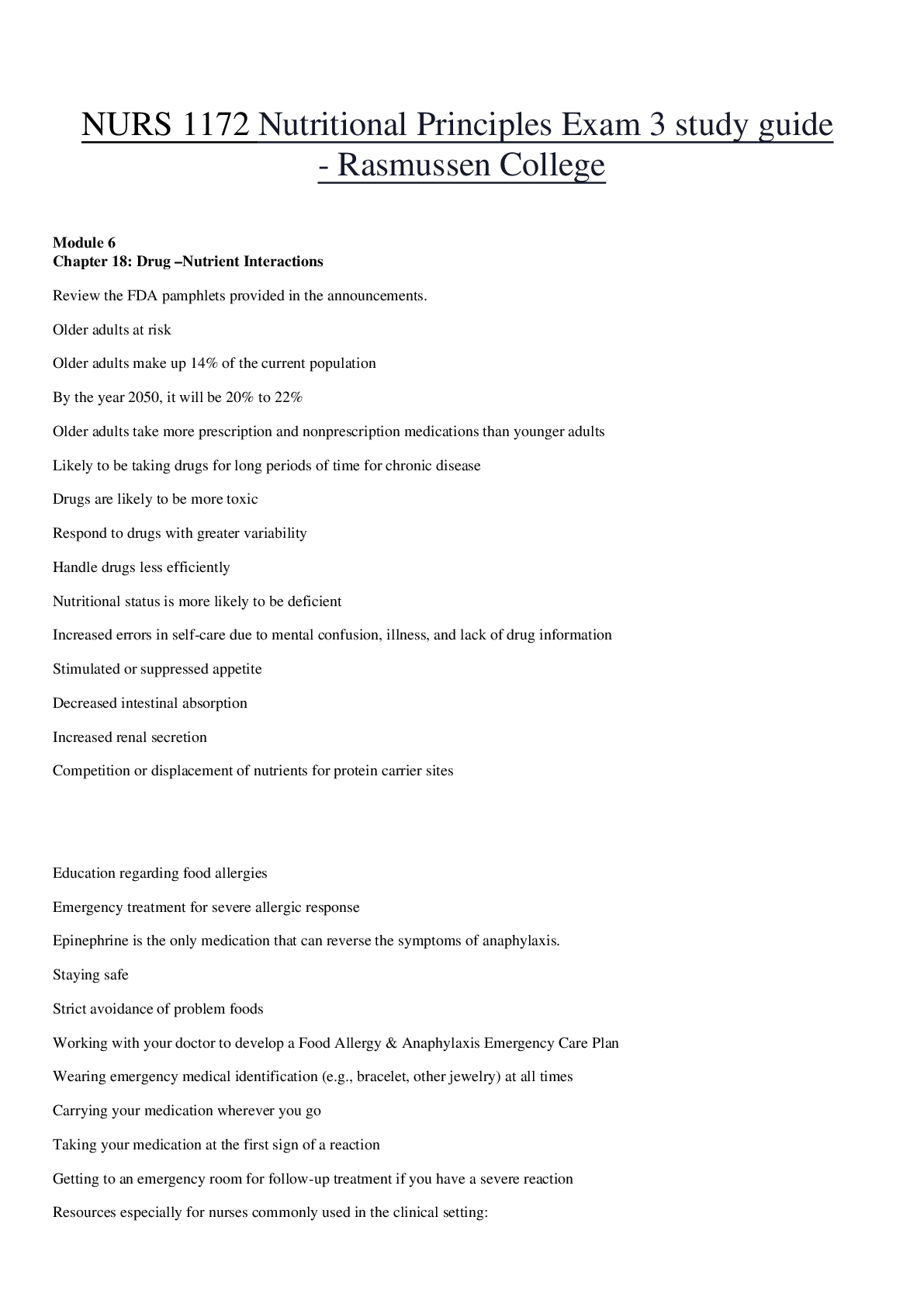
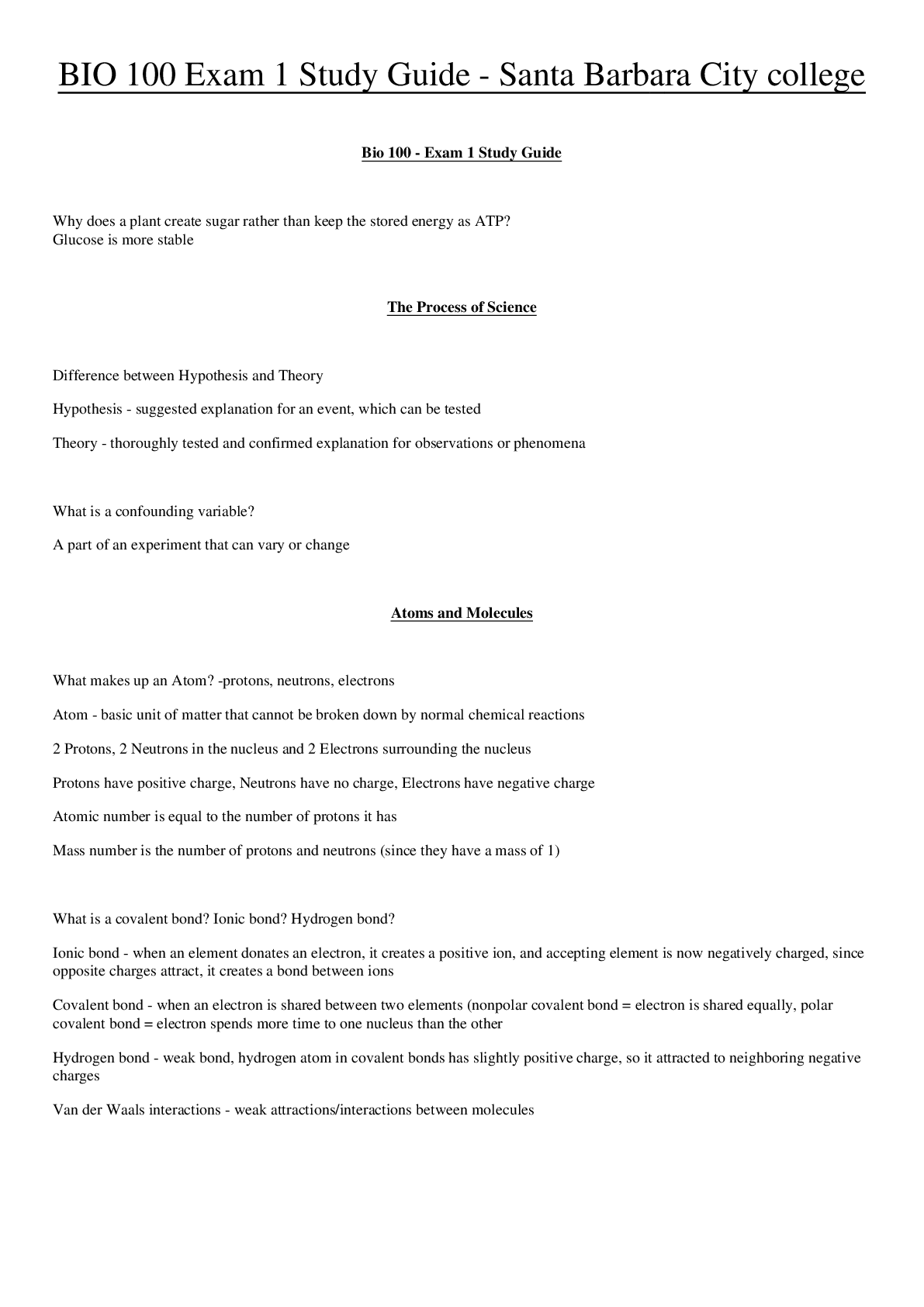
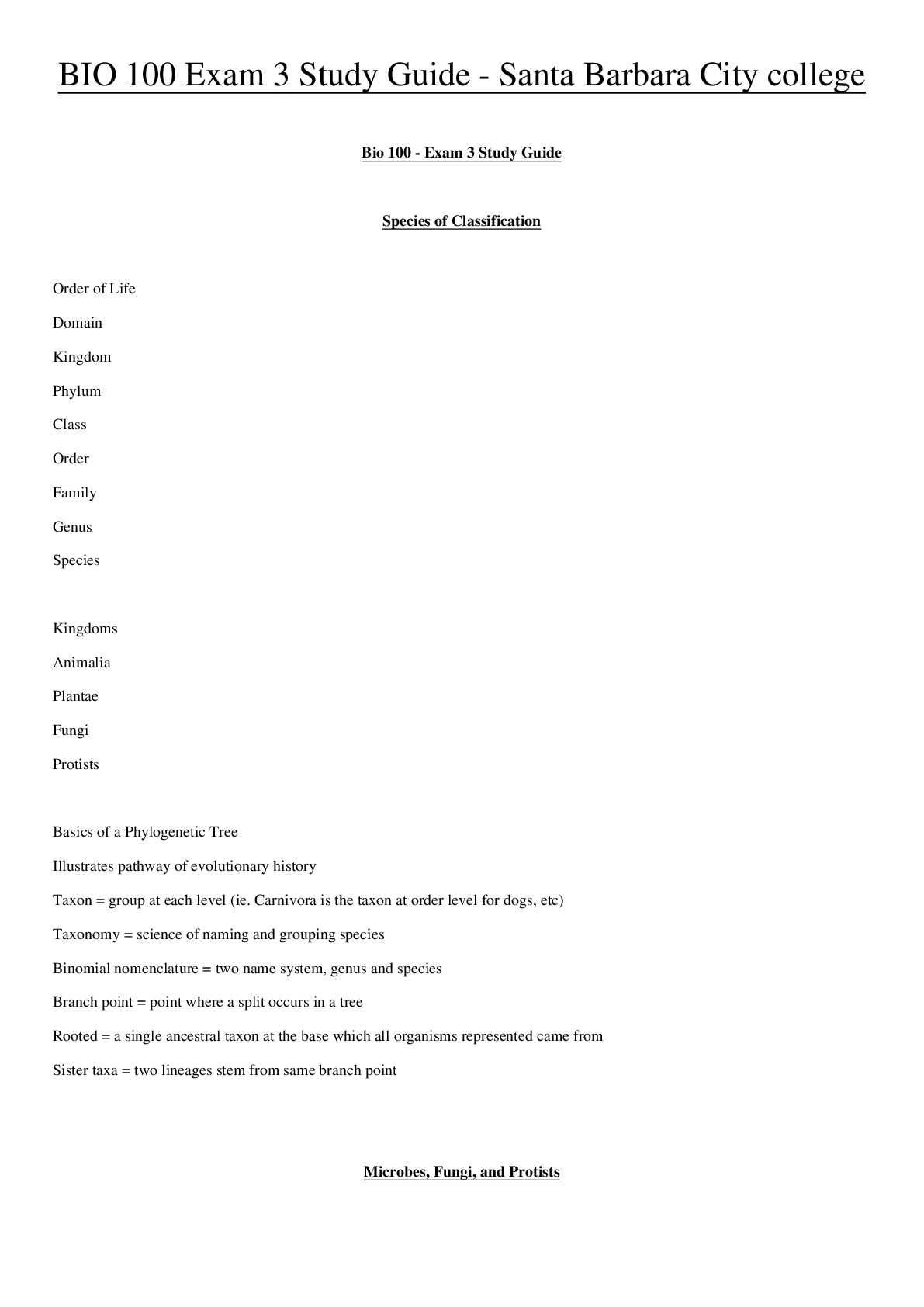
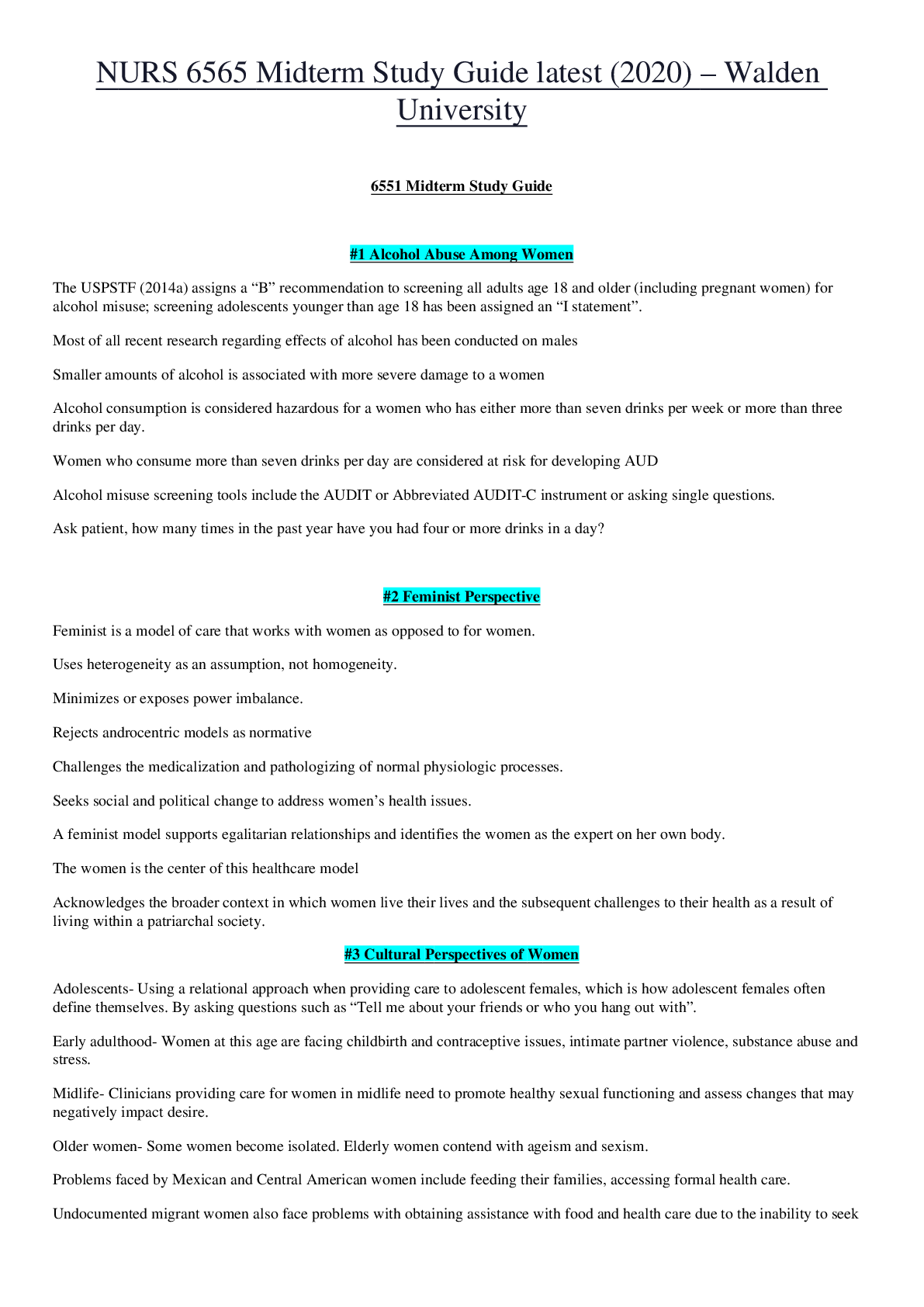


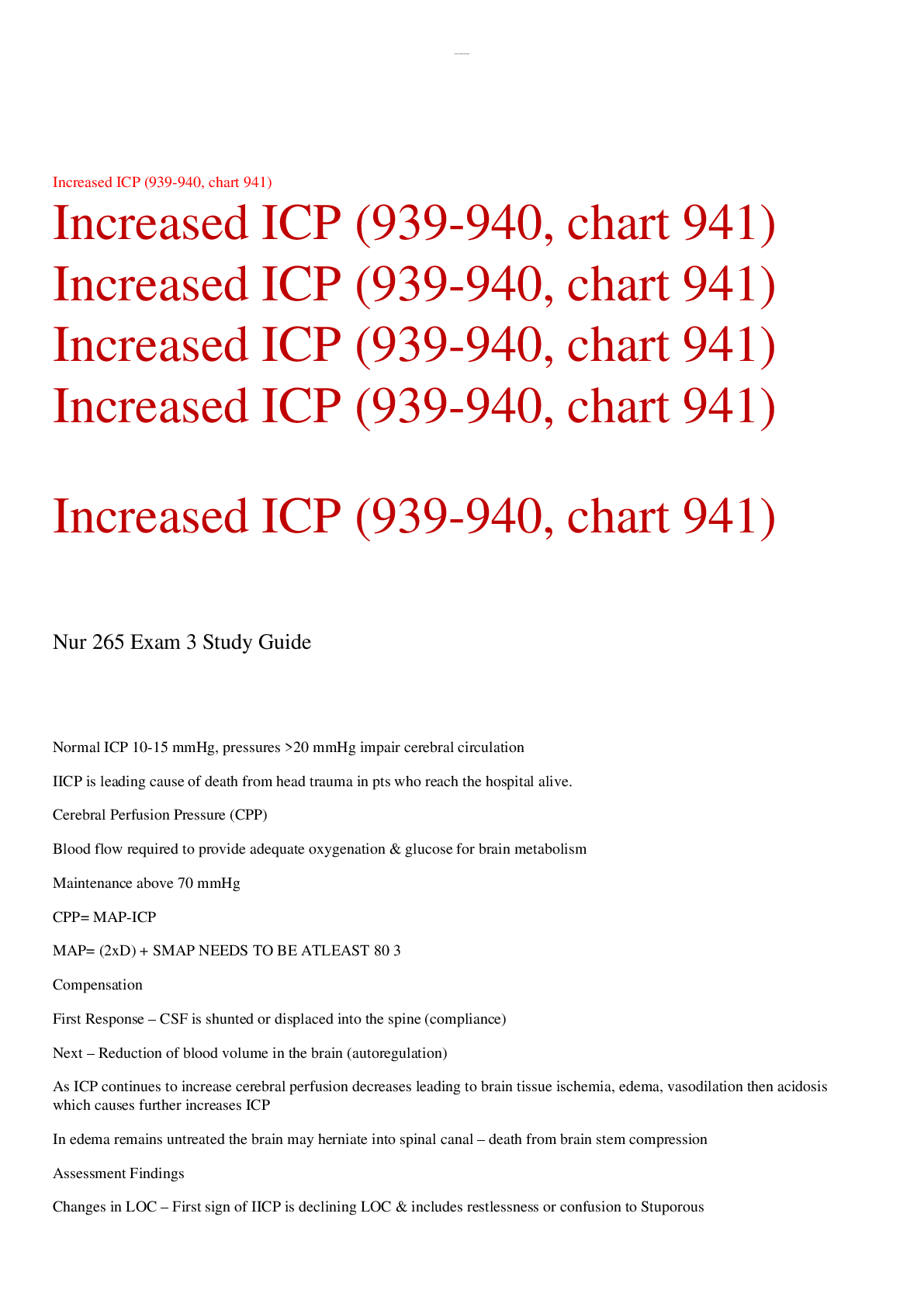
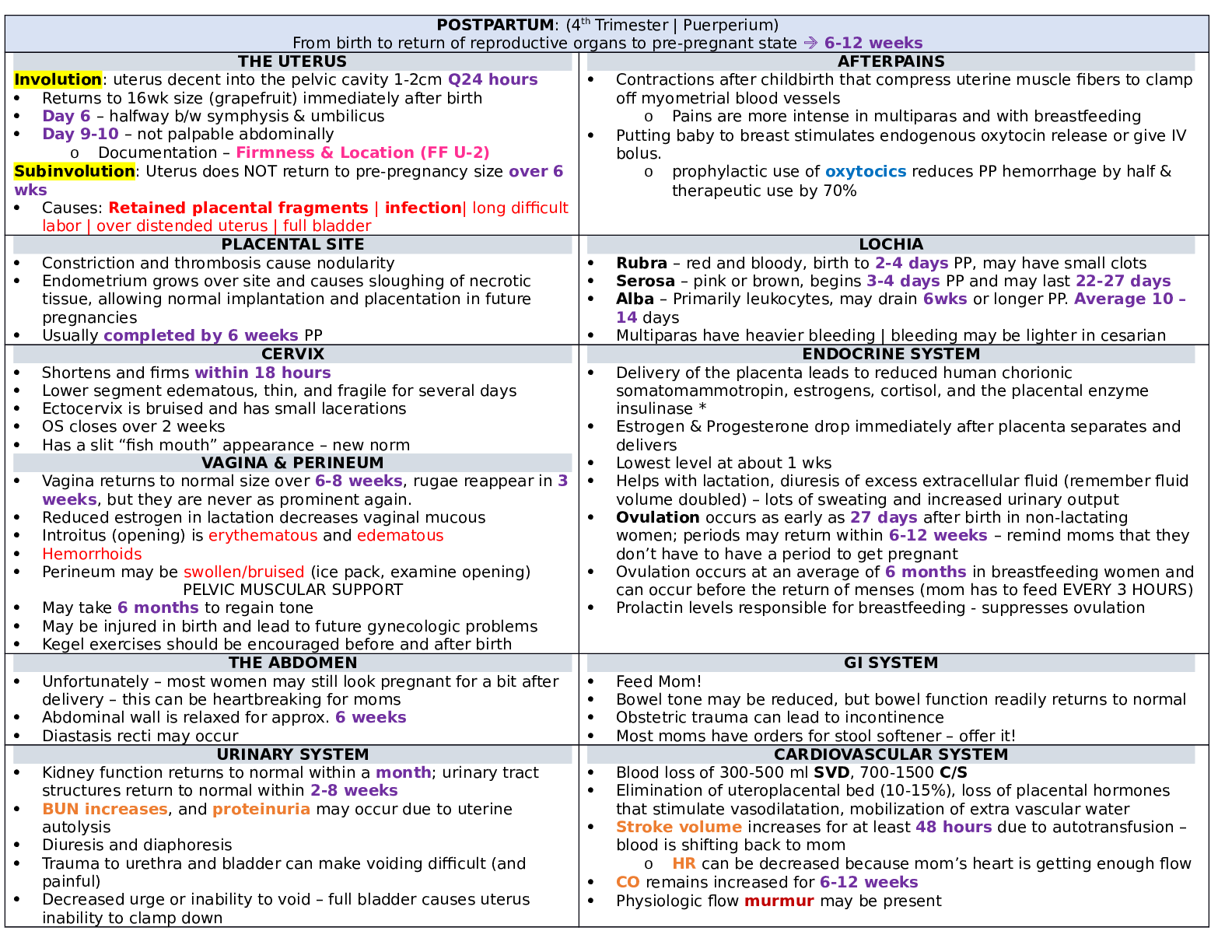
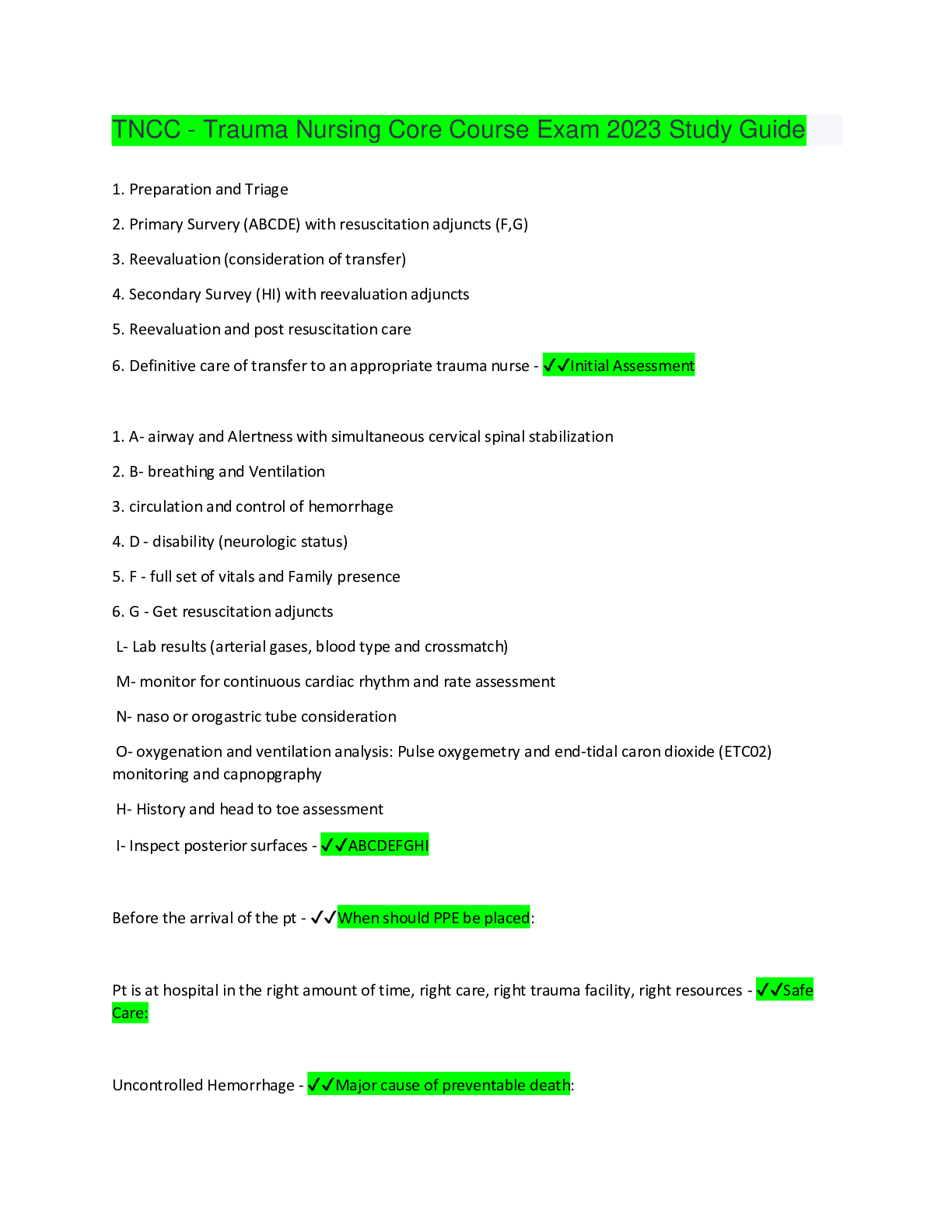
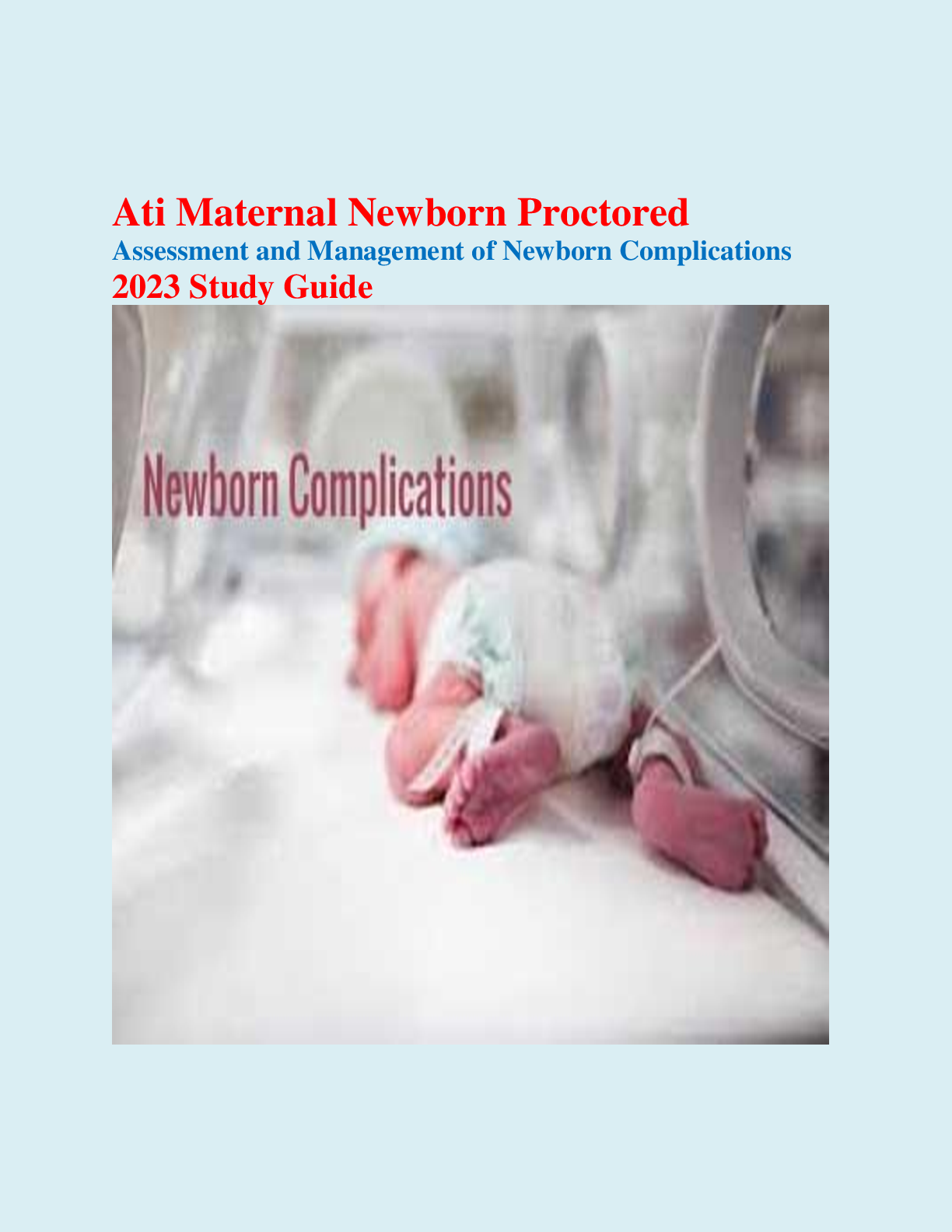
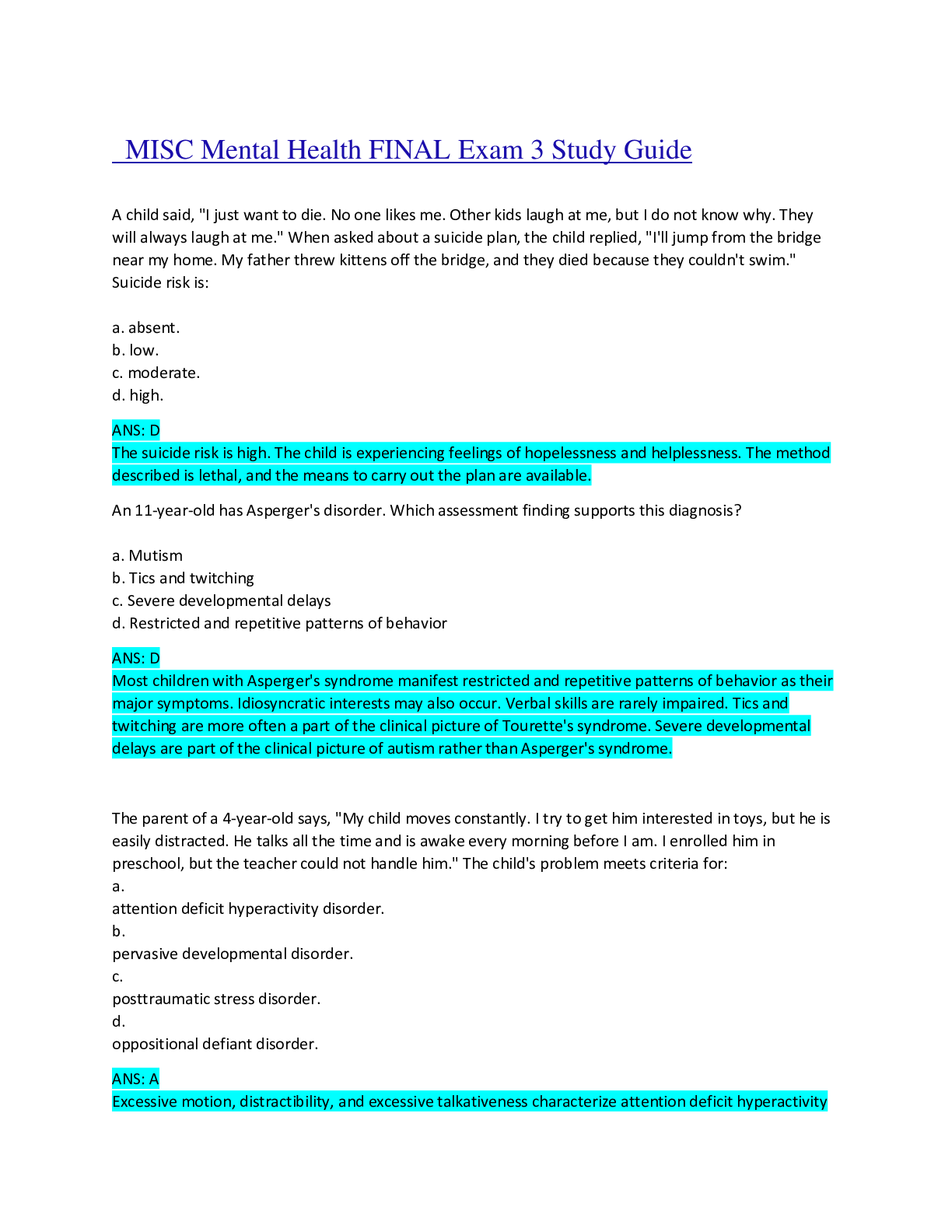




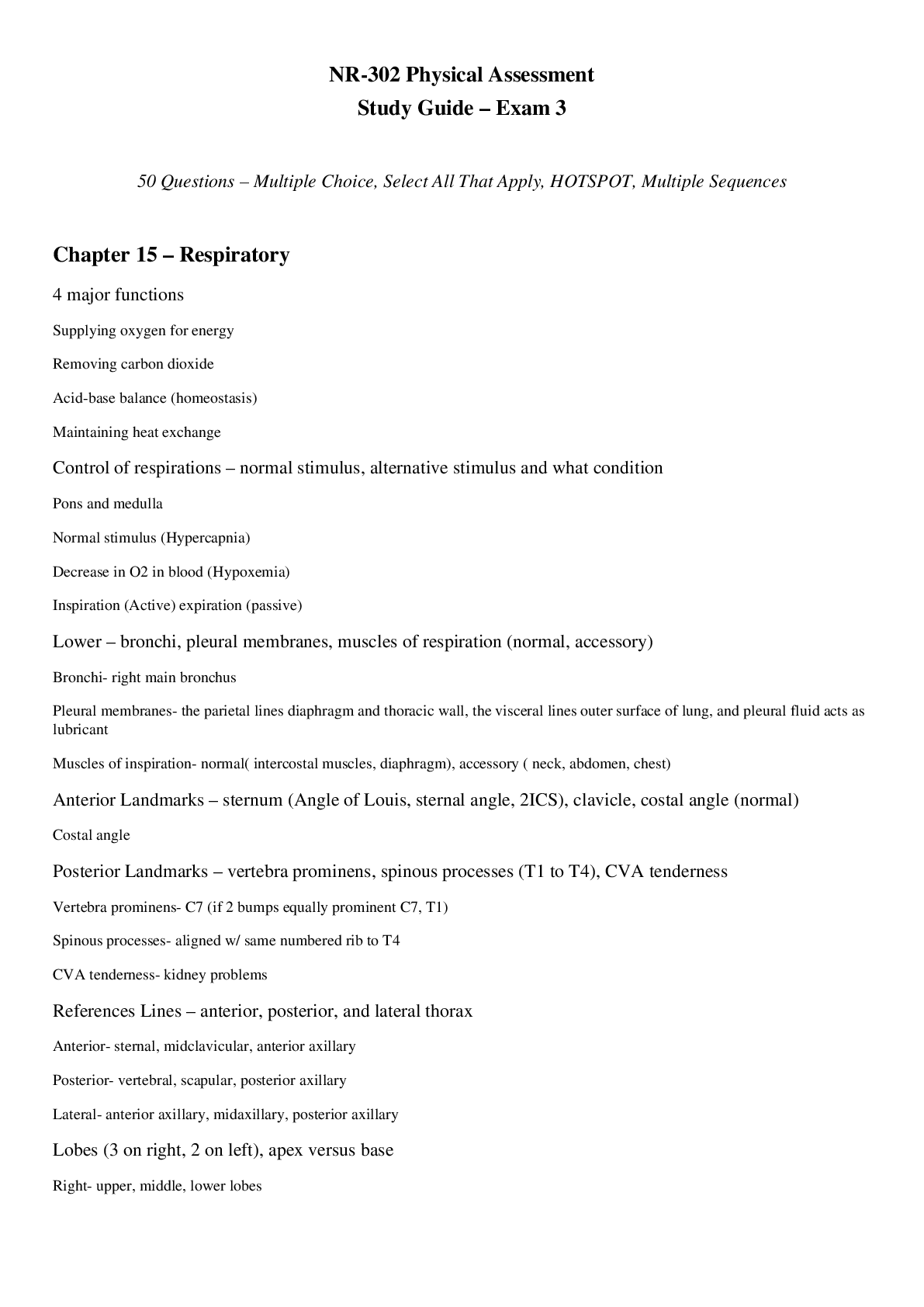
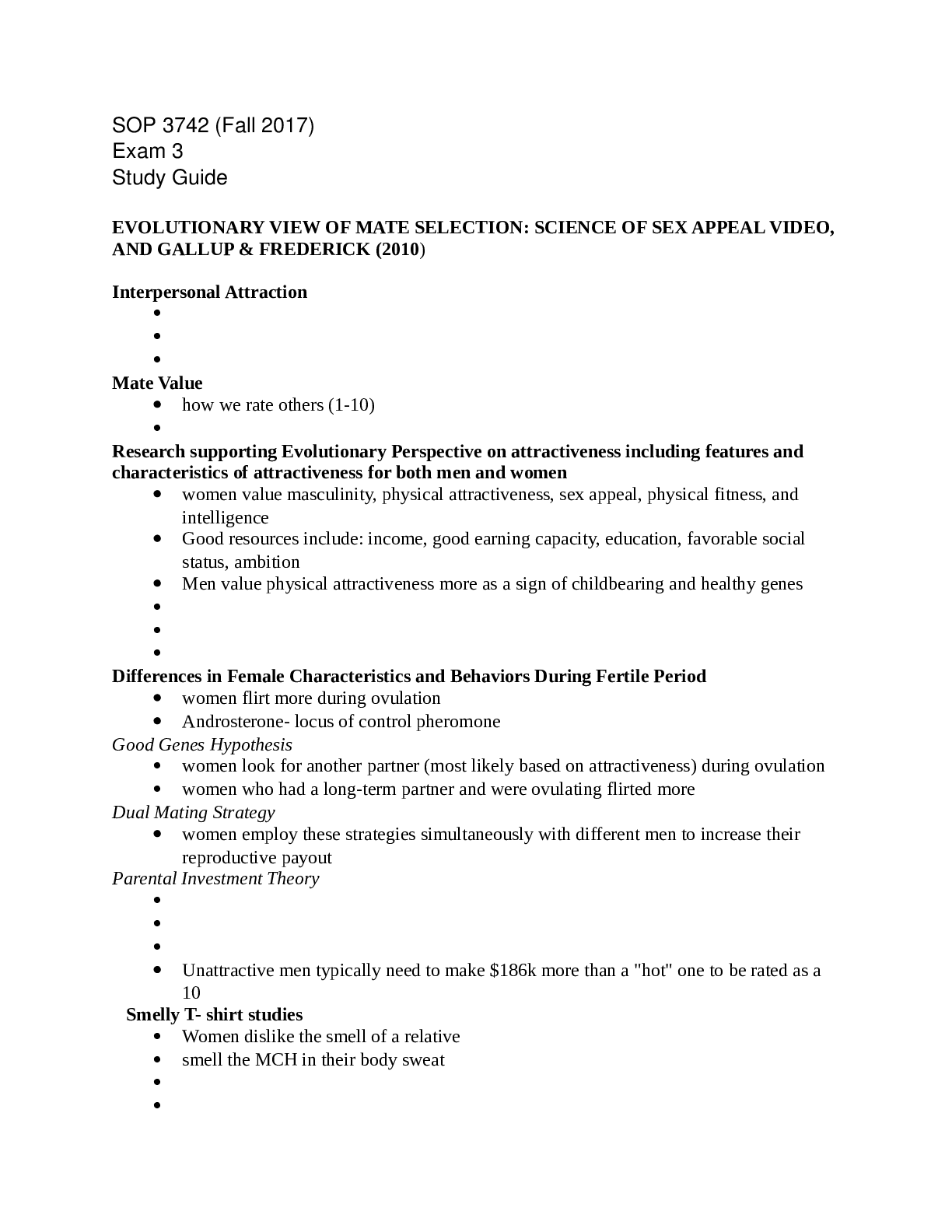
.png)

